
Universidade Fernando Pessoa
Porto, Portugal

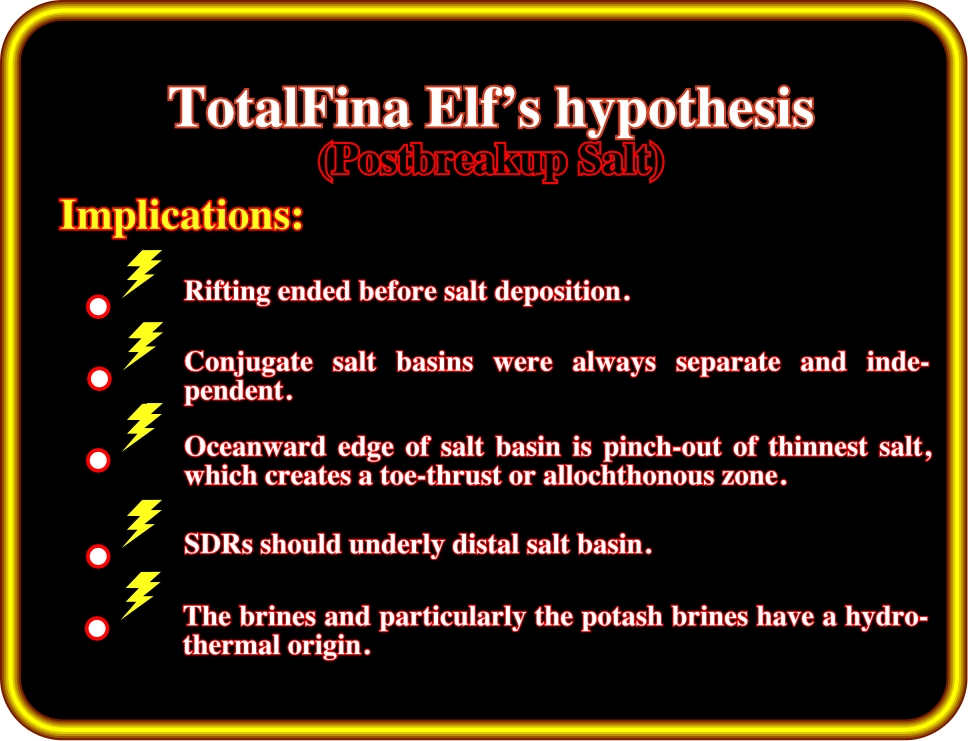
Plate 9- The implications of TotalFinaElf can be summarized as follows: 1) Rifting ended before salt deposition, 2) Conjugate salt basins were always separate and independent, in other words the so called Aptian Angola-Brazil salt basin never existed, 3) Oceanward edge of salt basin is pinch-out of thinnest salt, which creates a toe-thrust or allochthonous zone, 4) SDRs should underlay distal salt basin, 5) The brines and particularly the potash brines have a hydrothermal origin.
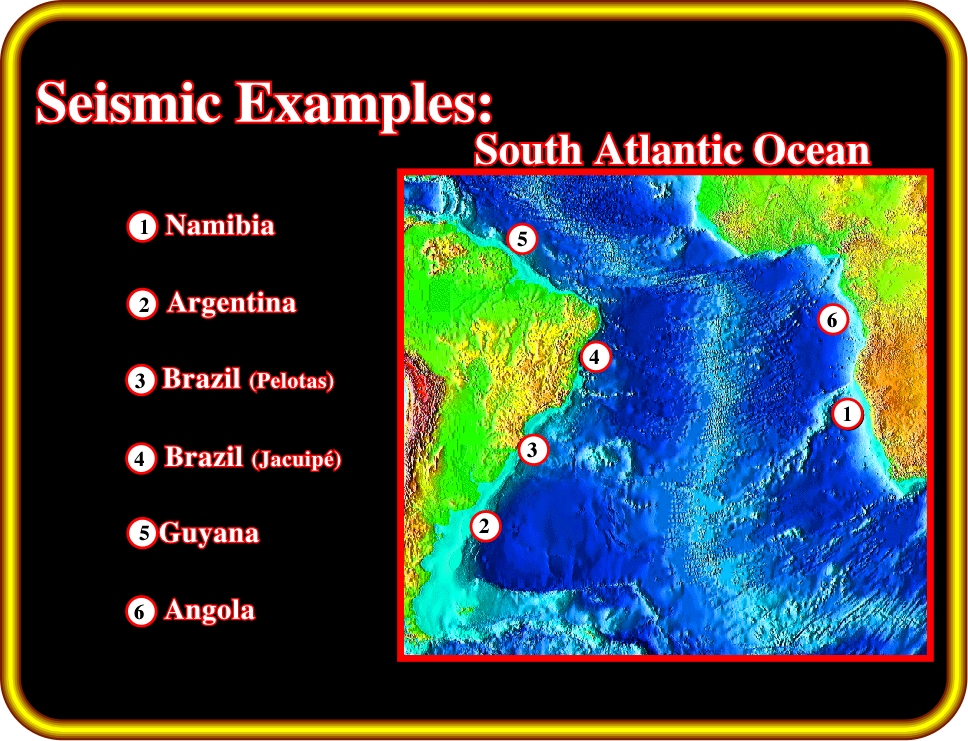
Plate 10- Seismic lines of the South Atlantic offshores corroborate the TotalFinaElf geological model.
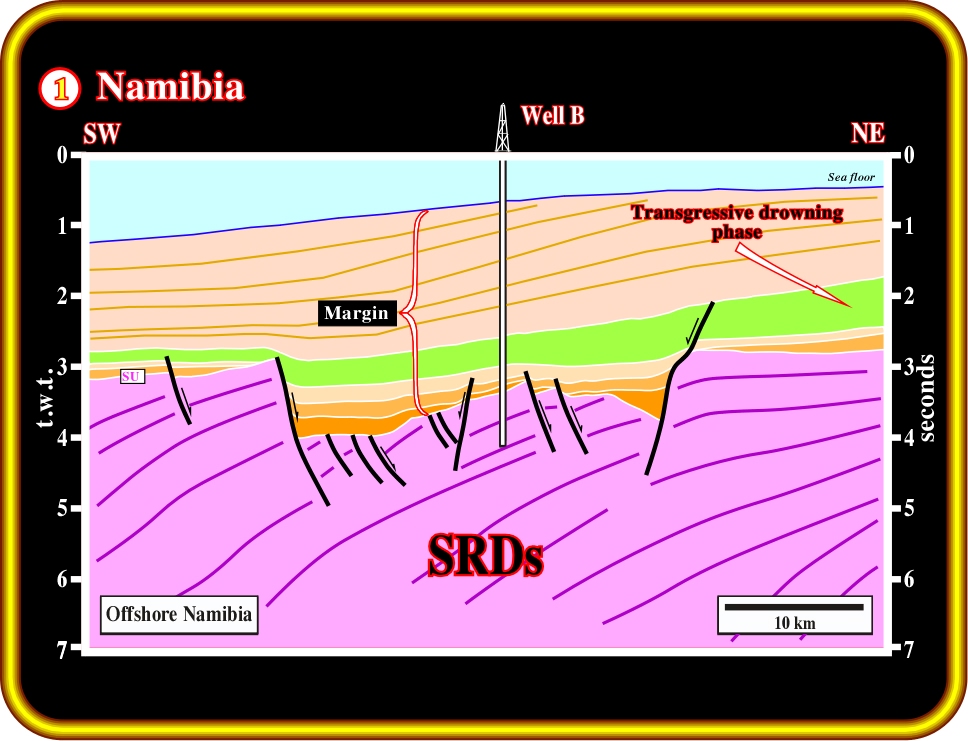
Plate 11- Five wells were drilled on this offshore. All of them were stopped on the seismic reflectors dipping toward the sea. In all cases the associated lithology correspond to the subaerial volcanism. The predicted source rocks on the type-rift basins are in fact lava flows postdating the breakup of the Gondwana.
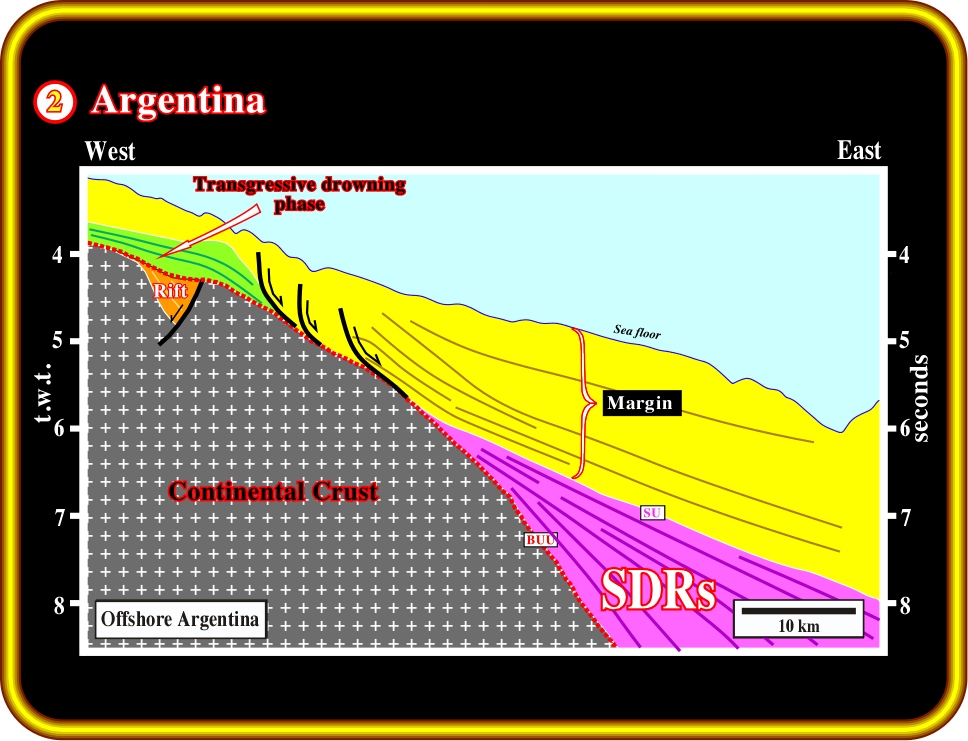
Plate 12- On this example from offshore Argentina, the SDRs have not been recognized by drilling. However, the geometric relationships and the morphology of the seismic reflectors clearly indicates that the reflectors of the seismic interval colored in violet do not correspond to sedimentary interfaces of type-rift basin but to subaerial lava flows. Actually, this seismic interval is bounded: (i)- At the base, by the breakup unconformity (BUU), and (ii)- At the top, by SU unconformity. The SU unconformity underlines the onset of the transgressive phase of the Post-Pangea continental encroachment stratigraphic cycle.
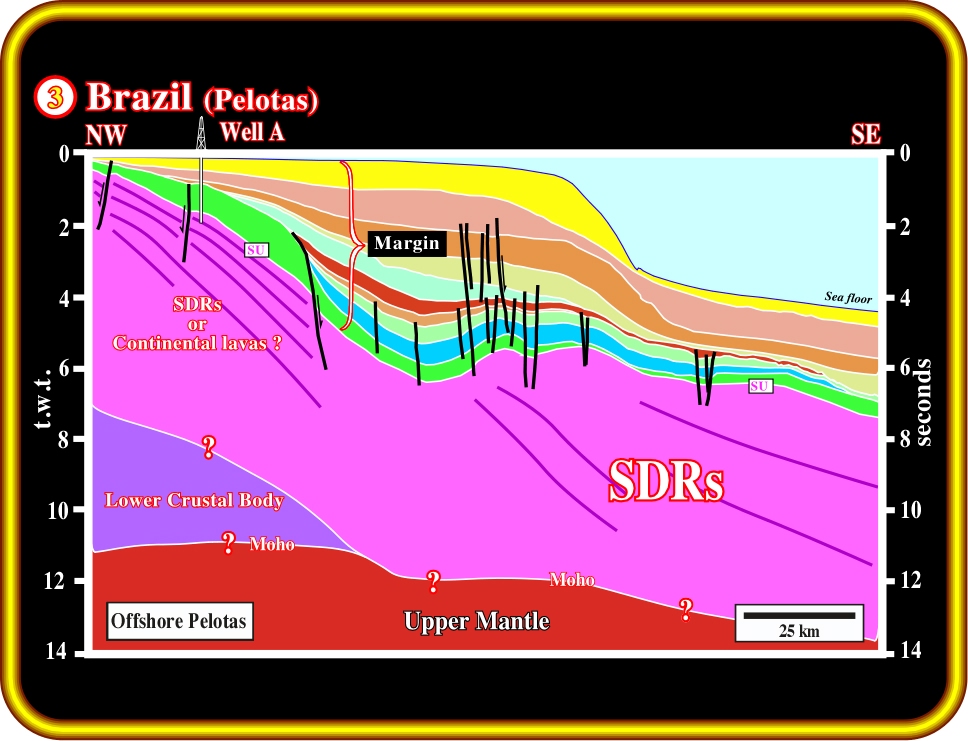
Plate 13- The offshore Pelotas (Brazil), illustrated by this regional seismic line, became a typical example of a volcanic continental divergent margin. Actually, the majority of the wells drilled by Petrobras corroborate the subaerial volcanic facies of the seaward dipping reflectors recognized on the seismic lines such the one illustrated here (communication oral of Celso Ponte).
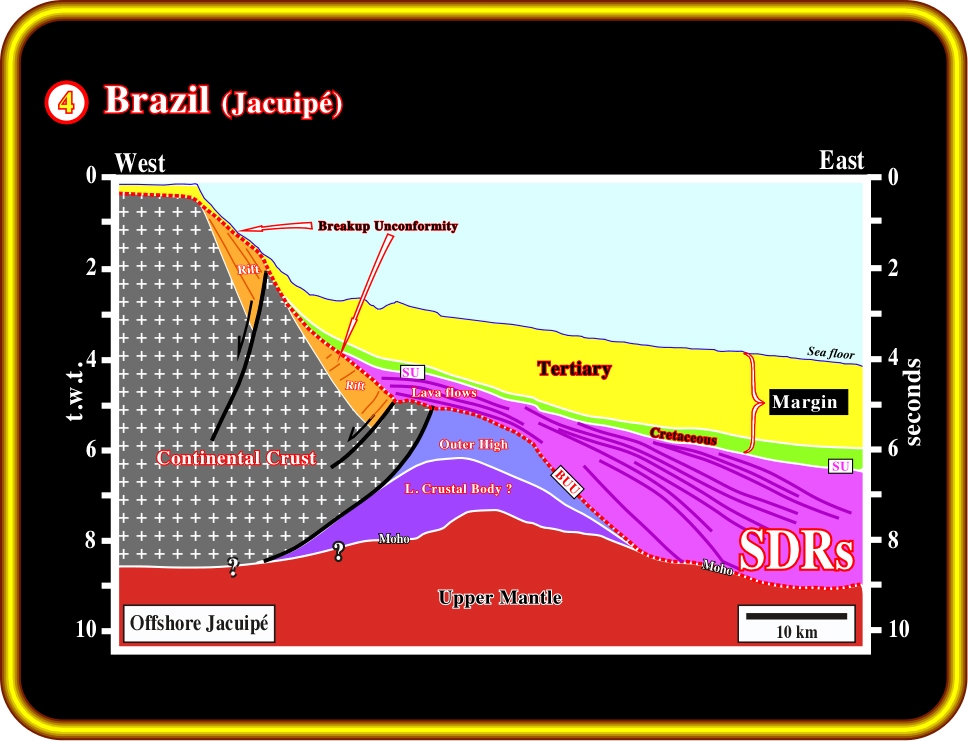
Plate 14- In the offshore Brazil, another typical area is the offshore of Jacuipé, which can be illustrated by this regional line. The SDRs are clearly postdating the breakup unconformity, in other words, they cannot be taken as reflectors associated with rift-type basin were very often potential source rocks are found. The distinguish characteristics between the SDRs and the rift-type basins are easily recognized on the interpreted line.
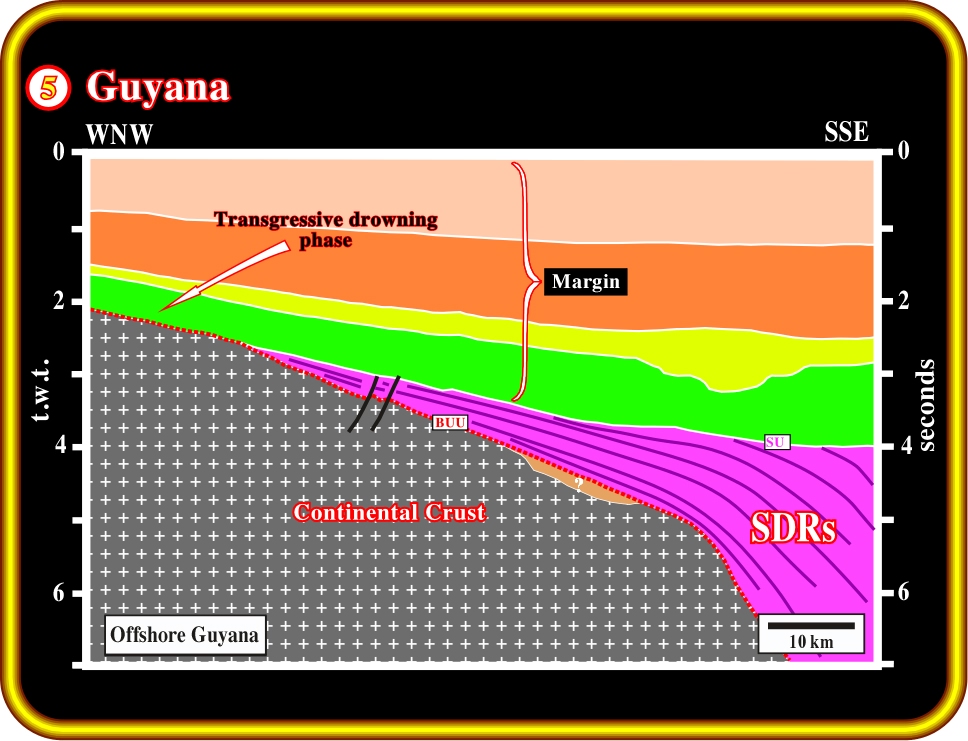
Plate 15- SDRs are also easily individualized on this line of Guyana offshore: 1) They postdate the breakup unconformity. 2) Their generating hydrocarbon potential is nul.3) A wildcat corroborated the volcanic facies and the absence of hydrocarbon potential of the SDRs.
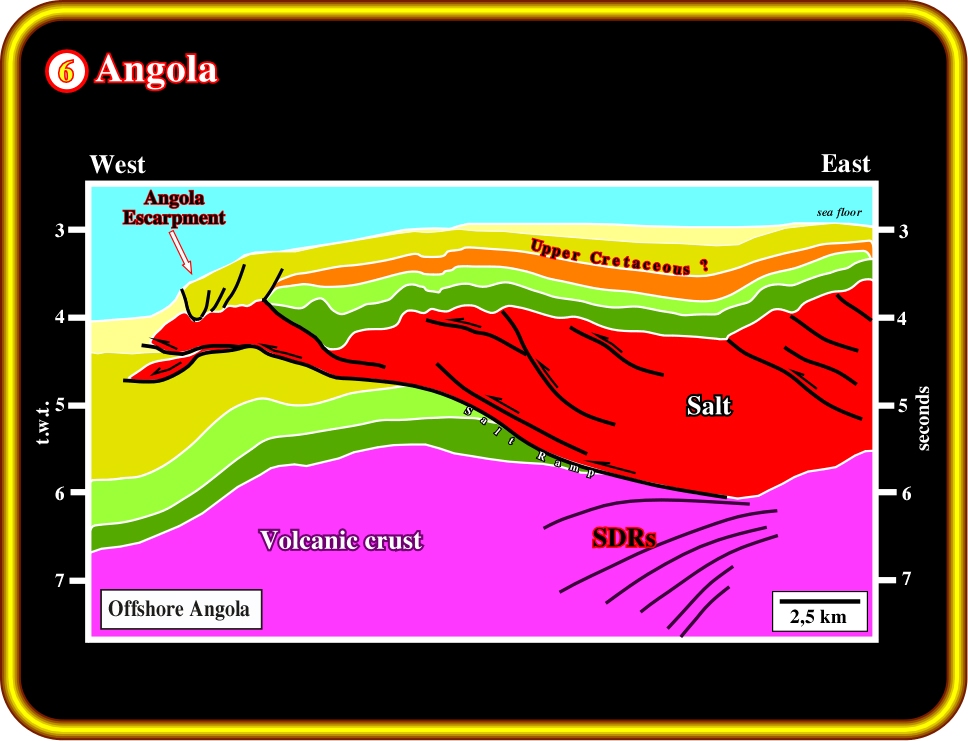
Plate 16- On offshore Angola, SDRs are easily recognized when the evaporites are absent. However, they are often masked when evaporites are present. Nevertheless, in certain areas, where modern seismic line have been shot, SDRs can be individualized even under thick salt layers, as is illustrated on this line.
to continue press![]() next
next
Send E-mail to carloscramez@gmail.com with questions or comments about this conference.
Copyright © 2006 CCramez
Last modification:
August, 2014